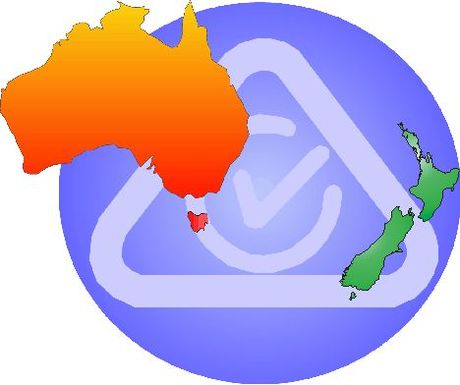New labelling requirements

On 1 March 2013, the Regulatory Compliance Mark (RCM) commenced the transition to replace the C-tick and A-tick marks. The transition period ended on 29 February 2016. The new Electrical Equipment Safety System (EESS) replaces the current state (except NSW) and territory based electrical safety approval systems and requires the use of the RCM for all in-scope equipment.
The RCM system requires Australian based manufacturers, importers or suppliers to register prescribed products on the EESS national database. The RCM is a single compliance mark and can only be used by Australian/New Zealand suppliers after establishing compliance with all applicable regulations including EMC, Telecoms, Radiocoms, Electromagnetic Radiation (EMR) and electrical safety. While the transition period has already ended, existing stock having the C-tick or A-tick labels may be sold until the stock is exhausted.
This article will explain the new Australian Communications and Media Authority (ACMA) and EESS regimes including the testing, certification and administrative requirements. Those using the RCM for ACMA compliance must first register as the ACMA Responsible Supplier on the EESS website. Next, they must identify the ACMA applicable standards and obtain the appropriate test reports. Products that do not have wireless or telecoms function are relatively straightforward and only require an EMC Test report to an EMC standard listed on the ACMA list of applicable standards.
Products that include a wireless transmitter such as Bluetooth, Wi-Fi, portable radios etc must also comply with the relevant ACMA Radiocommunications (Radcom) standard and the ACMA Electromagnetic Radiation (EMR) standard. The former C-tick label applied to the latter types of product. If a product also includes connection to the mobile phone network, satellite telecom network or the Public Switched Telephone Network (PSTN), it must comply with the relevant standards prescribed in the Telecommunications Labelling Notice (TLN) 2014. If it includes a Mobil Phone Network interface, determining the applicable ACMA requirements is often fraught with risk. It may be prudent to consult with an ACMA accredited Certification Body. The former A-tick label used to apply to equipment within the scope of the TLN.
There are some exemptions from the ACMA RCM labelling requirements and these are listed in the ACMA EMC Labelling Notice. RCM Labelling of some battery-powered equipment is voluntary; however, care should be taken when interpreting the ‘Battery Powered’ definition. The battery must be internal to the product and it must not be possible to operate when it is being charged by an external supply. Devices that use an automobile 12 V supply are not exempt. Nor are devices that have a wireless transmitter such as Bluetooth or Wi-Fi.
A documentary proof of compliance (compliance folder) must be kept at the disposal of the ACMA for audit purposes. It must include a signed Declaration of Conformity (DoC), the relevant test reports and a description of the product. The labelled product can then be sold in Australia and New Zealand.
Most mains-powered products other than Prescribed Articles are Compliance Level 1 under ERAC regulations. Registration is not mandatory; however, compliance with an appropriate safety standard is required under various state and federal laws. A valid safety test report should be kept on file in case of regulator request.
Domestic appliances and AC adapters/chargers are considered high-risk devices and are classified as Compliance Level 3 devices. A complete list of Compliance Level 3 (in-scope) equipment can be found in AS/NZS 4417.2:2012. Under the EESS RCM rules Compliance Level 3 products must be registered on the ERAC National Data Base by the Responsible Supplier (also the importer). A Certificate of Conformity must first be obtained from an accredited Certification Body. Imported Level 3 products must be registered by each importer (must be in Australia/NZ), even if another importer has registered the same product. Overseas entities cannot register as a Responsible Supplier.
The importer based in Australia/NZ will be solely responsible for safety compliance of the product. This responsibility cannot be delegated by a Local Representative Agreement with an overseas manufacturer. However, the importer can delegate the registration process to their Authorised Representative (consultant), who must be located in Australia/NZ. Registration and certification fees can be avoided by using a charger/adapter that is sourced from an Australian- or New Zealand based supplier located in one of the two countries.
ACMA suppliers now have a less onerous labelling system; however, suppliers of Compliance Level 3 products have a more strict and transparent regime to comply with.
Avoiding EMC issues: simple tests you can do yourself
This is a brief overview of EMC compliance with some practical tips on not getting caught out.
Electric dump valves help oil and gas company reduce emissions
Oil and gas company Laramie Energy deployed ASCO zero-emissions electric dump valves to comply...
Australia's largest electronics expo returns to Sydney
Electronex, the annual electronics design and assembly expo, will return to Sydney on 19–20...





